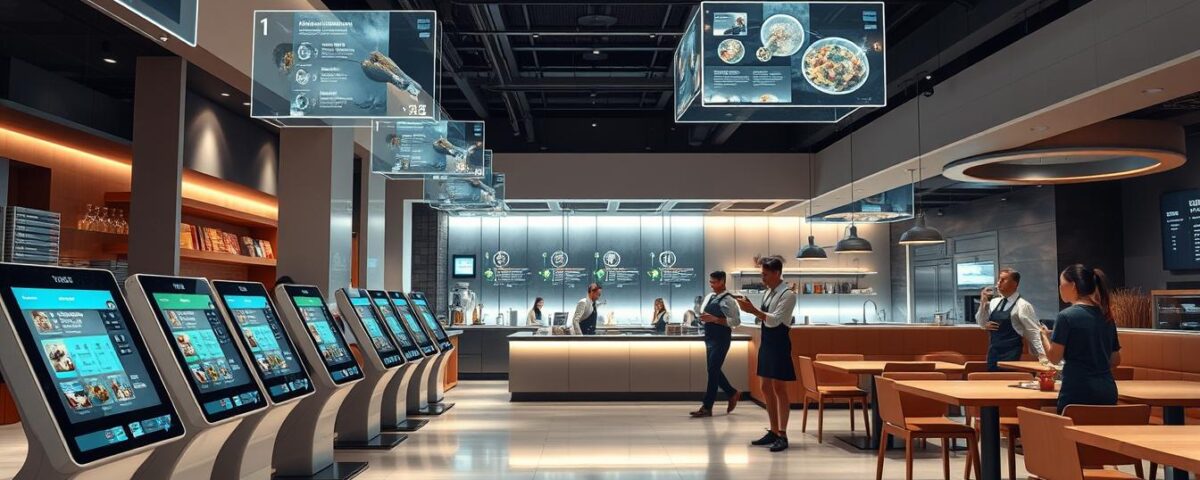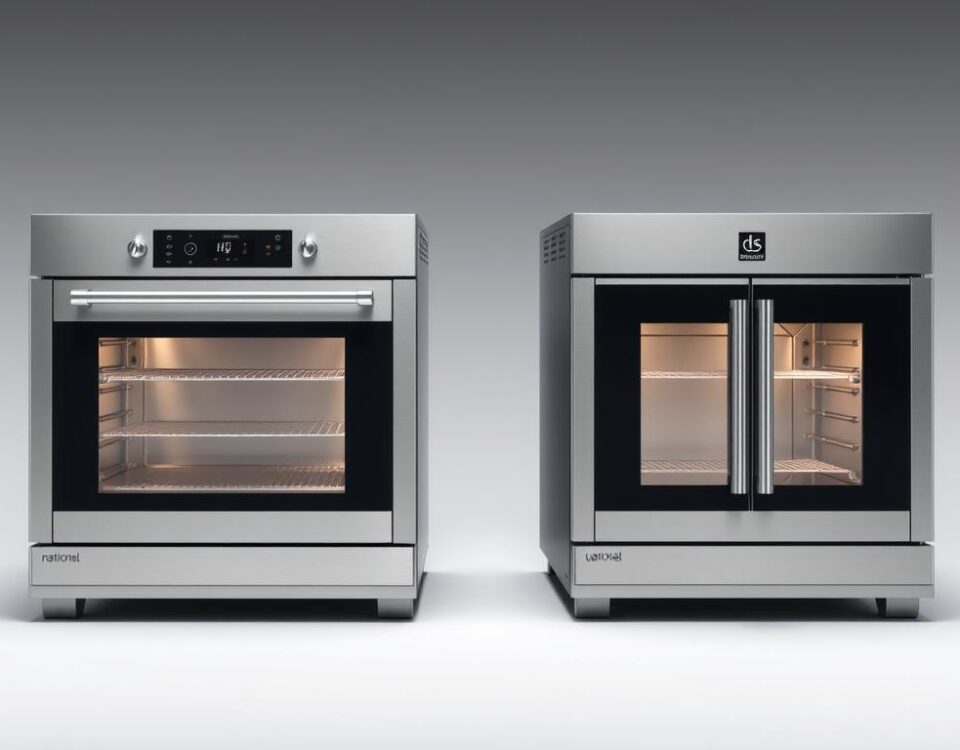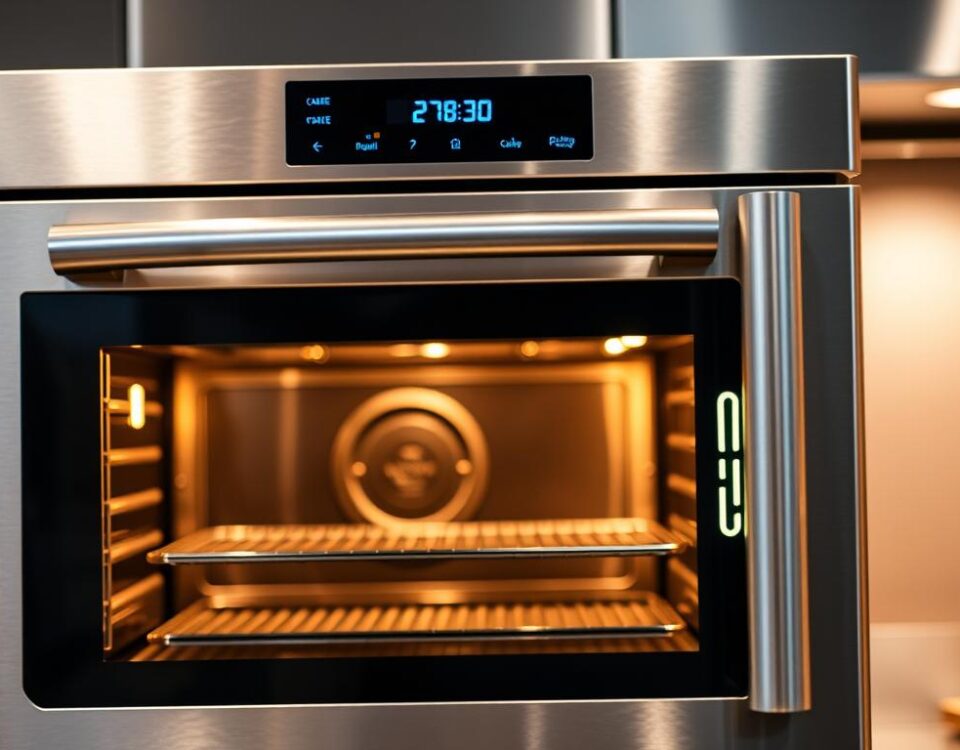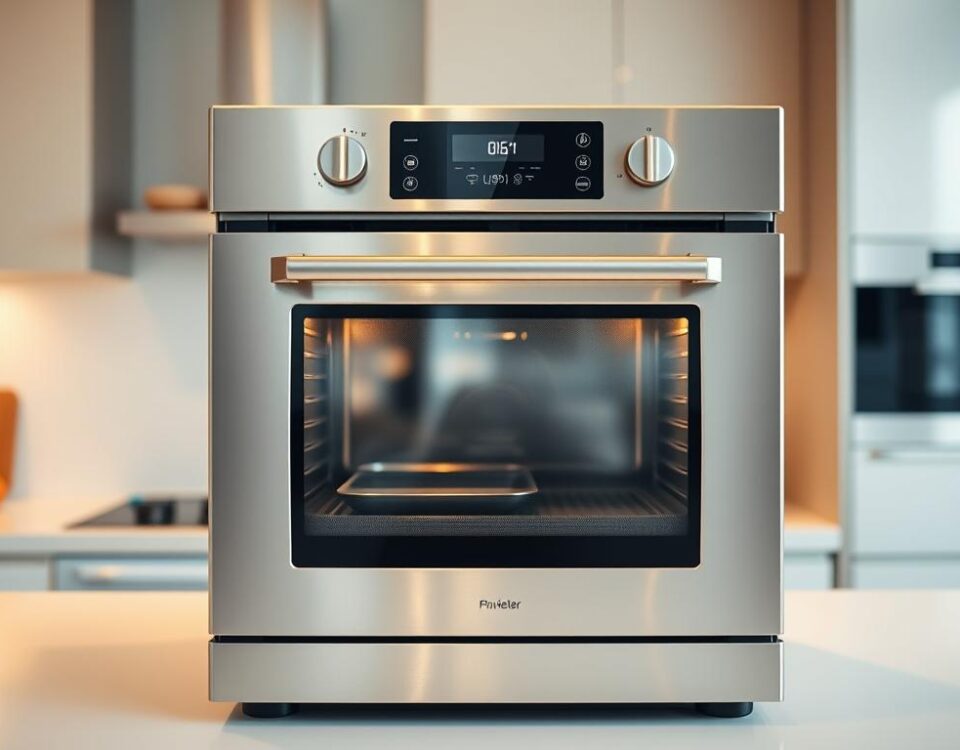
Toast vs. Square vs. Clover: Which POS is Right for Your Restaurant?
August 10, 2025
Restaurant Financing 101: Which Option Is Right for You?
August 11, 2025The restaurant industry is on the cusp of a technological revolution. As I reflect on the rapid advancements in restaurant technology, it’s clear that 2025 will be a pivotal year for innovation.
Did you know that the adoption of technology in restaurants can lead to a significant reduction in operational costs? With the increasing demand for seamless dining experiences, restaurants are turning to cutting-edge tools to stay ahead.
As we dive into the world of restaurant tech stack 2025, we’ll explore the top 10 technologies that are transforming the industry. What if you could streamline your operations, enhance customer experiences, and stay competitive in a rapidly evolving market?
Key Takeaways
- Discover the top 10 technological tools that are revolutionizing the restaurant industry.
- Learn how to streamline operations and improve customer experiences.
- Understand the importance of adopting the right technology to stay competitive.
- Explore how these innovations address common pain points in the industry.
- Find out how to reduce operational costs while improving service quality.
The Evolution of Restaurant Technology in 2025
As we enter 2025, restaurant technology is evolving at an unprecedented rate. Automation, a long-standing feature in the restaurant industry, is now advancing to save more time and reduce errors.
The need for restaurants to upgrade their tech stack has become increasingly evident. With the ongoing labor shortage, technology is enabling eateries to do more with less staff. By adopting innovative solutions, restaurants can streamline operations, improve efficiency, and enhance customer experiences.
Efficient Operations
Technology is fundamentally changing workflow patterns in restaurants, from order taking to food preparation and delivery. According to industry experts, “The future of restaurant technology lies in its ability to optimize operations and improve customer satisfaction.”
“The future of restaurant technology is all about creating a seamless experience for customers, from ordering to delivery.”
Impact on Restaurant Operations
The impact of technology on restaurant operations is multifaceted. By leveraging advanced restaurant technology, eateries can reduce wait times, lower labor costs, and improve order accuracy. The table below highlights some key benefits:
| Technology | Benefits |
|---|---|
| Automated Order Systems | Reduced wait times, improved order accuracy |
| Inventory Management Software | Lower labor costs, reduced waste |
| Data Analytics | Improved customer insights, optimized operations |
By embracing these technological advancements, restaurants can stay ahead of the curve and thrive in a competitive market. As the industry continues to evolve, it’s essential for restaurants to remain adaptable and open to new innovations.
AI-Powered Restaurant Management Systems
The integration of AI in restaurant management systems is revolutionizing the industry by enhancing operational efficiency and customer satisfaction.
Predictive Analytics for Inventory Optimization
AI inventory management for restaurants is becoming increasingly sophisticated, utilizing predictive analytics to optimize inventory levels. This technology helps restaurants reduce waste and ensure that they have the necessary ingredients on hand to meet customer demand.
AI Chatbots for Enhanced Customer Service
Restaurant AI chatbot solutions are transforming customer interactions, enabling faster and more personalized service. AI chatbots can handle routine inquiries, reservations, and ordering, freeing up human staff to focus on high-value customer interactions.
- Transforming customer interactions across multiple channels
- Handling routine inquiries, reservations, and ordering
- Providing 24/7 service capabilities
- Collecting valuable insights into customer preferences and behavior patterns
By leveraging these AI-powered solutions, restaurants can significantly enhance their operational efficiency and customer satisfaction, driven by advancements in restaurant technology.
Smart Kitchen Automation Tools
Smart kitchen automation tools are transforming restaurant operations by increasing efficiency and reducing waste. The integration of Internet of Things (IoT) technology is creating connected kitchen environments where equipment communicates and coordinates operations.
Robotic Kitchen Assistants
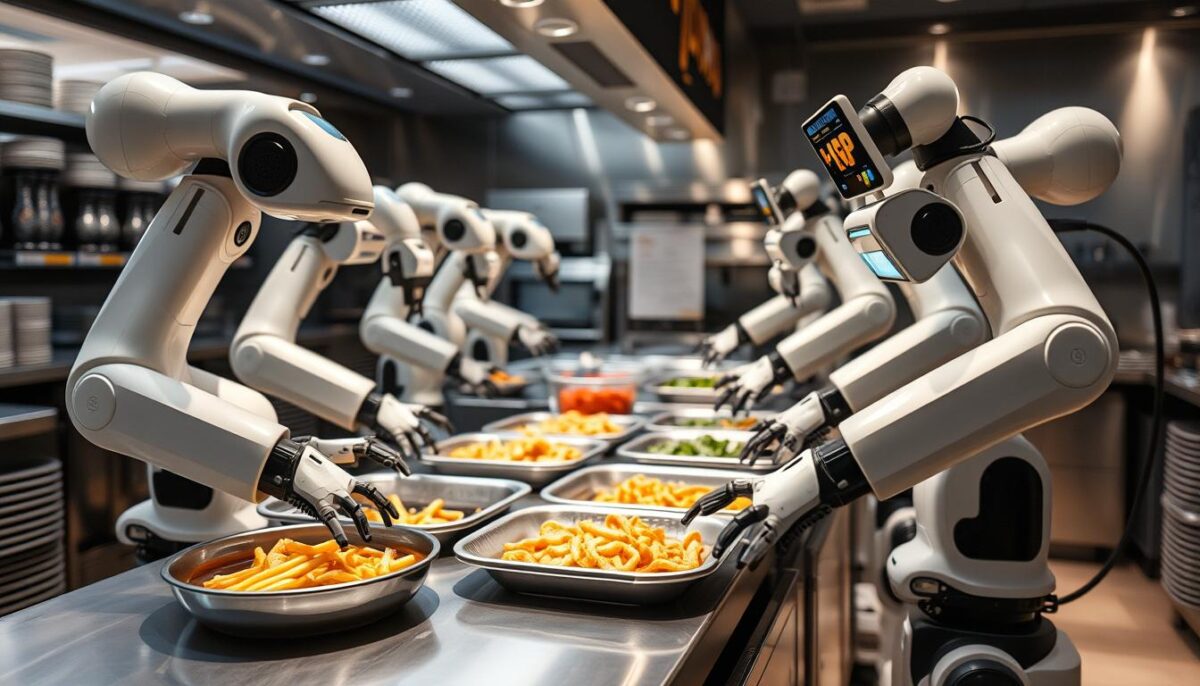
Robotic kitchen assistants are revolutionizing food preparation. These robots can perform repetitive tasks, such as chopping vegetables or flipping burgers, with precision and speed.
IoT-Enabled Kitchen Equipment
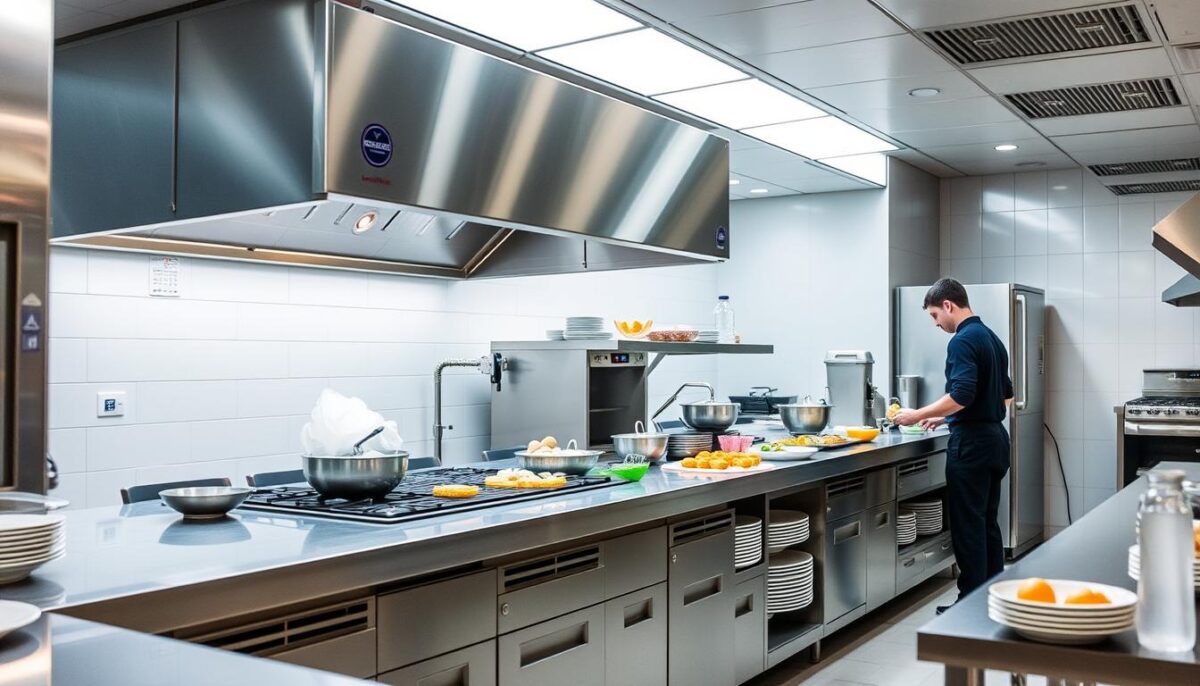
IoT-enabled kitchen equipment is enhancing operational efficiency. Smart appliances monitor their performance, predict maintenance needs, and adjust cooking parameters based on environmental conditions, minimizing waste and optimizing systems.
Data-Driven Personalization Platforms
Data-driven personalization is revolutionizing the way restaurants interact with their customers. By leveraging advanced analytics, restaurants can now offer tailored experiences that significantly enhance customer satisfaction.
Customer Preference Analysis Software
Customer preference analysis software is a crucial tool for understanding customer behavior. This software helps restaurants analyze customer data to curate personalized menu suggestions and targeted promotions.
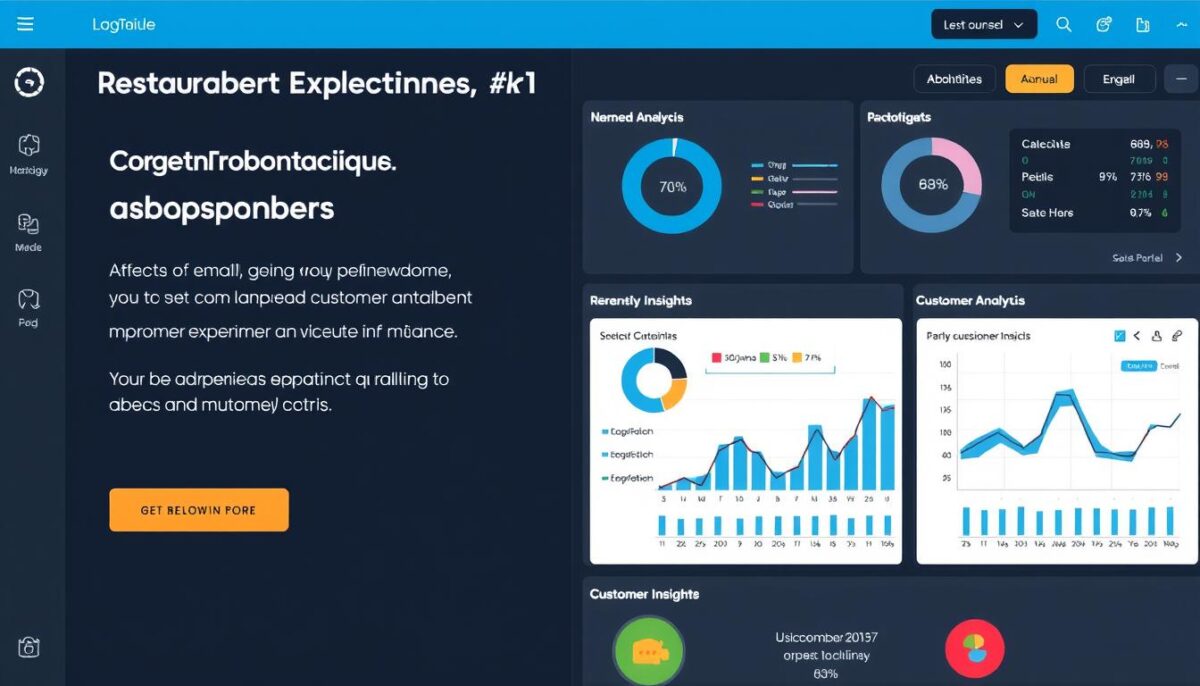
Tailored Marketing and Loyalty Programs
Tailored marketing and loyalty programs are transforming the way restaurants engage with their customers. By using data analytics, restaurants can create personalized rewards and experiences that resonate with individual guests, enhancing customer loyalty and retention.
Some key aspects of tailored marketing include:
– Moving from broad demographic targeting to individualized communications based on specific preferences and behaviors.
– Evolving loyalty programs beyond simple points systems to offer personalized rewards and experiences.
– Using AI-powered systems to automatically segment customers and generate tailored marketing campaigns.
– Delivering personalized offers at the optimal moment through the customer’s preferred channel.
– Creating emotional connections with customers, transforming them from occasional diners to brand advocates.
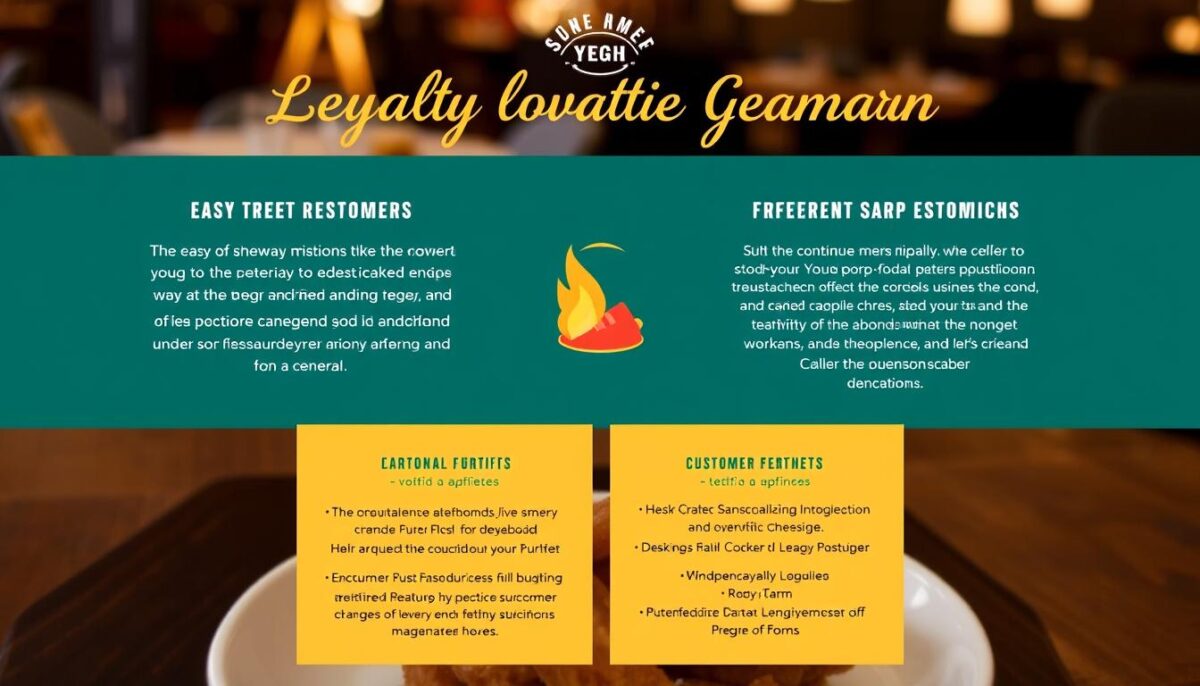
Building Your Restaurant Tech Stack 2025
To stay competitive in 2025, restaurants need to strategically assemble a tech stack that addresses their unique operational challenges. This involves selecting the right technologies and ensuring they work seamlessly together.
Integration Considerations for Multiple Systems
When integrating multiple systems, consider compatibility and scalability. Ensure that your chosen technologies can communicate effectively and adapt to future needs. Key considerations include data synchronization, user experience, and system reliability. A well-integrated tech stack can significantly reduce operational costs and enhance the overall business efficiency.
Cost-Benefit Analysis of Tech Investments
Conducting a thorough cost-benefit analysis is crucial when investing in restaurant technology. Consider both tangible benefits, such as labor savings and reduced waste, and intangible benefits, like improved staff morale and enhanced customer experience. When evaluating costs, factor in not just the initial investment but also ongoing expenses like maintenance and training for your staff. This comprehensive approach will help you make informed decisions that positively impact your restaurant’s bottom line.
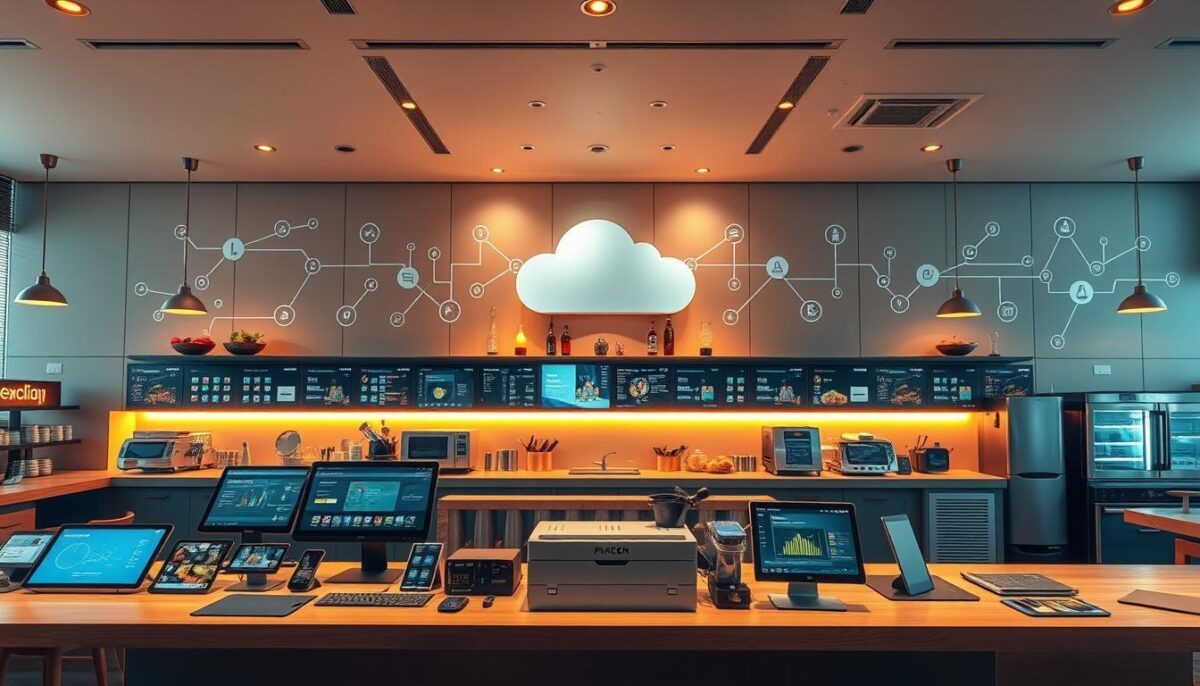
- Evaluate technology investments based on potential impact and implementation complexity.
- Consider both short-term and long-term benefits when assessing tech investments.
- Prioritize investments that enhance customer experience and operational efficiency.
By adopting a strategic approach to building your restaurant tech stack in 2025, you can drive growth, improve customer satisfaction, and maintain a competitive edge in the market.
Contactless and Digital Payment Solutions
Digital payment solutions are streamlining restaurant operations and improving customer satisfaction. As restaurants become more frustrated with their third-party delivery providers, the incentive to invest in first-party ordering grows.
QR Code Ordering Systems
QR code ordering systems are becoming increasingly popular, allowing customers to order and pay directly from their mobile devices. This technology enhances speed and hygiene, improving the overall dining experience.
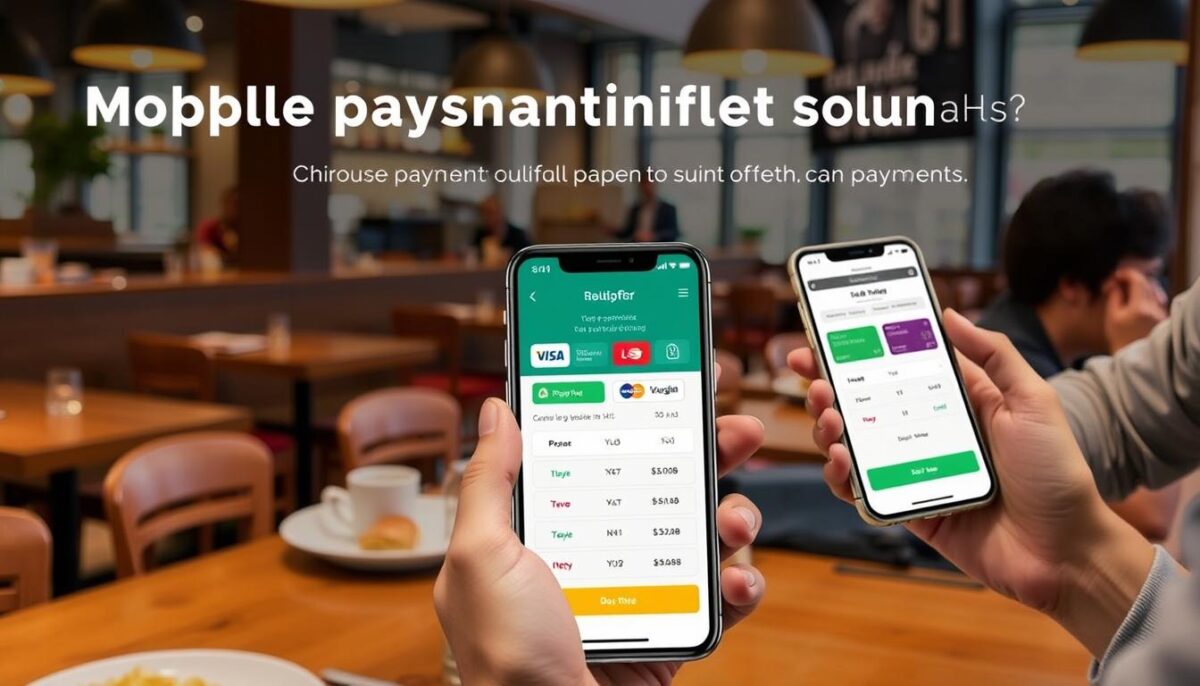
Mobile Payment Integration
Mobile payment integration is revolutionizing the way restaurants handle transactions. By analyzing mobile payment solutions, I can see how they’re streamlining the checkout process, reducing wait times, and improving table turnover rates.
- Variety of Payment Options: From digital wallets like Apple Pay and Google Pay to restaurant-specific apps and tableside payment devices.
- Seamless Experiences: Payment integration with ordering systems creates end-to-end experiences that enhance customer satisfaction.
- Valuable Data: Mobile payments generate valuable transaction data that can inform marketing strategies and operational decisions.
- Security Considerations: Highlighting best practices for protecting customer payment information in mobile environments.
Innovative Delivery and Virtual Brand Technologies
The restaurant industry is on the cusp of a delivery revolution, driven by technological advancements.
Cloud Kitchen Management Software
Cloud kitchen management platforms are revolutionizing the way restaurants manage their off-premise operations. These software solutions enable efficient order management, inventory control, and delivery logistics coordination.
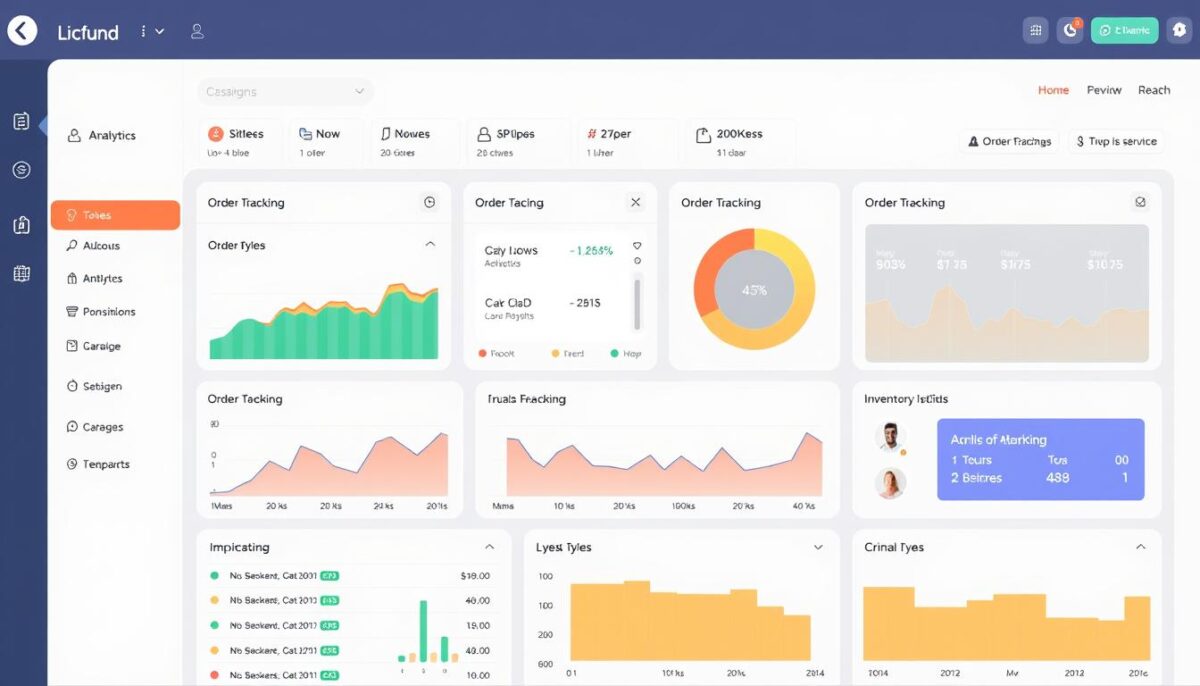
Drone and Autonomous Delivery Systems
The use of drone and autonomous delivery systems is gaining traction in the food delivery landscape. Companies like Flytrex have already completed numerous successful food deliveries using drones, marking a significant step forward in this technology.
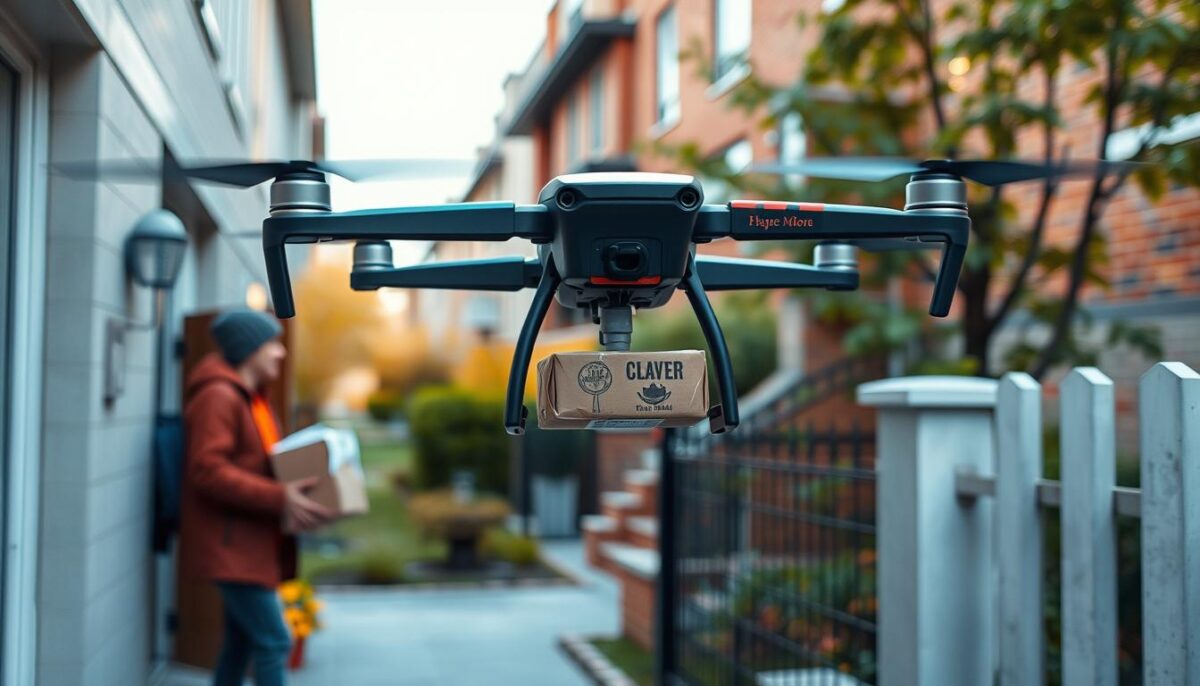
As the delivery landscape continues to evolve, brands that adopt these innovative technologies will be better positioned to meet changing consumer demands and stay ahead of the competition.
Conclusion: Preparing Your Restaurant for the Tech-Forward Future
Embracing technology is no longer optional for restaurants; it’s a necessity for survival and growth. As we look to 2025, the key technologies that will define the restaurant tech stack include AI-powered management systems, smart kitchen automation, and data-driven personalization platforms. To stay competitive, restaurants must assess their current technology position and develop a phased implementation plan for necessary upgrades. It’s also crucial to foster a culture of innovation within the organization. While technology transforms the industry, the fundamental purpose of restaurants remains creating memorable experiences and delicious food for customers. By balancing technological innovation with human elements, restaurants can enhance customer experiences and drive growth.
By adopting these technologies, restaurants can streamline operations, reduce food waste, and improve customer service. The future of the restaurant industry is being shaped by innovation, and those who adapt will thrive.
FAQ
What are the benefits of implementing AI-powered restaurant management systems?
AI-powered systems can help optimize inventory, streamline operations, and enhance customer service through predictive analytics and AI chatbots, ultimately leading to increased efficiency and reduced costs.
How can smart kitchen automation tools improve my kitchen’s efficiency?
Smart kitchen automation tools, such as robotic kitchen assistants and IoT-enabled kitchen equipment, can help reduce food waste, improve cooking consistency, and free up staff to focus on other tasks, resulting in a more streamlined kitchen operation.
What is data-driven personalization, and how can it benefit my restaurant?
Data-driven personalization involves using customer data to create tailored marketing and loyalty programs, enhancing the overall dining experience and encouraging customer loyalty, which can lead to increased sales and customer retention.
How can I integrate multiple systems into my restaurant’s tech stack?
When integrating multiple systems, consider factors such as compatibility, scalability, and ease of use to ensure seamless integration and maximize the benefits of your tech investments.
What are the advantages of contactless and digital payment solutions?
Contactless and digital payment solutions, such as QR code ordering systems and mobile payment integration, can improve the customer experience, reduce wait times, and increase efficiency, ultimately driving sales and customer satisfaction.
How can innovative delivery and virtual brand technologies benefit my restaurant?
Innovative delivery and virtual brand technologies, such as cloud kitchen management software and drone delivery systems, can help expand your customer reach, improve delivery efficiency, and create new revenue streams.
What are the key considerations when investing in new restaurant technology?
When investing in new technology, consider factors such as cost, ROI, and alignment with your business goals to ensure that your tech investments drive real value for your restaurant.
